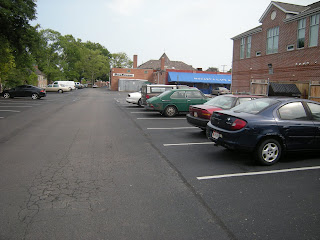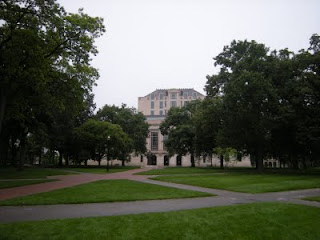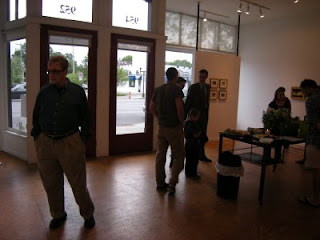
I suppose I've always had a soft spot in my heart for the neglected, the not shiny, the not new; those things that, in the vernacular of Linus, "just need a little love". I can't explain it rationally, but there's something in the nature of the borderline derelict that makes me say, "That's not so bad, I bet it can be fixed".
This sympathetic inclination toward all things salvageable has informed me through two questionable home purchases, countless thrift store finds (large and small), and dozens of motorized vehicles (of both the two and four-wheeled variety). Admittedly this inclination has been dormant of late (I don't have nearly the collection of almost functional bikes, radios, amps, and appliances I used to), but a peak behind my house reveals that an ember of it still glows.
Pictured, in all it's humble glory, is my 1975 Saab 99 Wagonback. I owned one of these in the early '90s and always loved it. When the chance to buy another came along, I couldn't resist. It's nimble, it's quirky, and it's got a modern design pedigree courtesy of
Sixten Sason. Sason was a Swedish designer who, in addition to designing cars for Saab, also dabbled in vacumn cleaners for Electrolux and sewing machines for Husqvarna. While not as widely recognized as Eames, Saarinen, or Nelson in the mid-century designers pantheon, he was certainly a contemporary and equal.
The 99 is not a particularly common car, and it's not particularly collectible either. In Saab lore, it's mostly seen as a transitional vehicle; the bridge between Saab being a quirky two-stroke import and Saab being a worldwide luxury marquee. That Saab used the 99 as the platform to launch the first commercia

lly available turbo-charged car gives it a bit of status, but unless you've got one of those, you've mostly got an old and not really valuable car.
I bought mine from my local Saab mechanic a few years ago for $300.00. He'd had it on his lot for a while with the intention of restoring it. I suppose at some point he realized that wasn't going to happen, and since I'd been pestering him, he let me have it (Really, it's not such a bad little car, it just needs a little love). I too had every intention of restoring it, but haven't. It is, quite literally, too big of a job for me.
What it's become is my second car. Given my penchant for all things old, I've never owned a new car (In fact, I've never owned a car in the same decade it was manufactured). Driving older cars of course necessitates taking some precautions. The first is a AAA membership, and the second is keeping an extra car handy for when the first one breaks.
This "second car plan" has paid off a couple times in the last year. I logged quite a few miles in the 99 when the windshield of my VW Golf started rusting out in a very alarming way. Rather than being forced into a hasty purchase to replace the VW, I was able to take my time and find the right car while tooling around in the not so luxurious lap of the 99. More recently, when a drunk driver wrecked my "first string car" the 99 was there to get me back and forth to work while I sorted through my purchase options.

I still go out back and start it regularly (I had to chase a nesting possum out of the engine compartment once), and I'll take it on short errands to make sure everything is still functional. I like that it's easy to find in parking lots, and I'm heartened by the occasional supportive comment from strangers. I'm never sure how much is appreciation and how much is sympathy, but you know what they say about gift horses.
So yeah...that's how I roll. If you see me out and about, make sure you honk and wave!









































